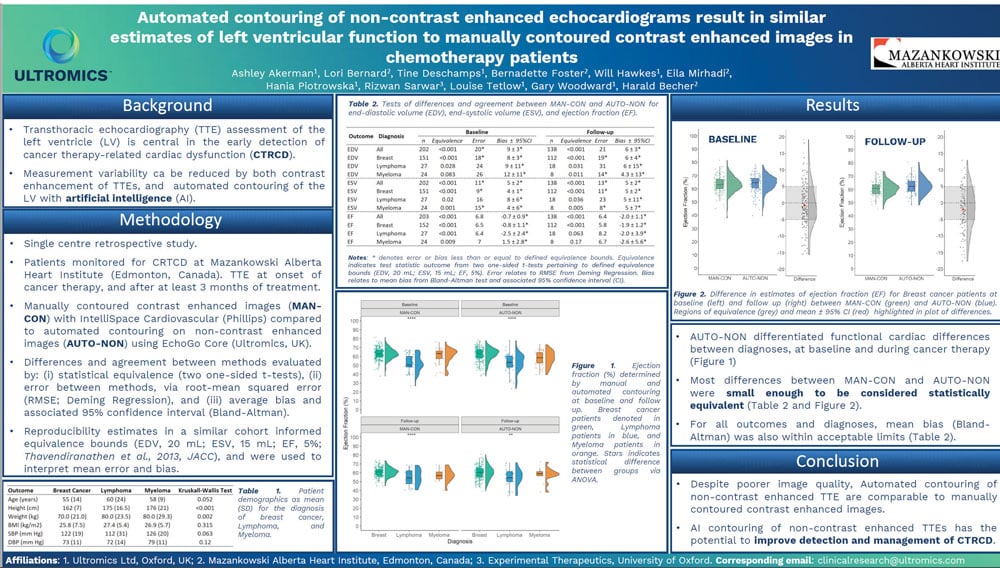Ashley Akerman, Lori Bernard, Tine Deschamps, Bernadette Foster, Will Hawkes, Eila Mirhadi, Hania Piotrowska, Rizwan Sarwar, Louise Tetlow, Gary Woodward, Harald Becher.

See full-size poster
Background
- Transthoracic echocardiography ( assessment of the left ventricle ( is central in the early detection of cancer therapy related cardiac dysfunction CTRCD.
- Measurement variability ca be reduced by both contrast enhancement of TTEs, and automated contouring of the LV with artificial intelligence (AI).
Method
- Single centre retrospective study.
- Patients monitored for CRTCD at Mazankowski Alberta.
- Heart Institute (Canada) TTE at onset of cancer therapy, and after at least 3 months of treatment.
- Manually contoured contrast enhanced images (MAN.CON) with IntelliSpace Cardiovascular (Phillips) compared to automated contouring on non contrast enhanced images (AUTO NON) using EchoGo Core (UK).
- Differences and agreement between methods evaluated by i statistical equivalence (two one sided t tests),tests),(error between methods, via root mean squared error (RMSE Deming Regression), and ( average bias and associated 95 confidence interval (Bland Altman.
- Reproducibility estimates in a similar cohort informed equivalence bounds ( 20 mL ESV, 15 mL EF, 5 Thavendiranathen et al 2013 JACC and were used to interpret mean error and bias.
Results
- AUTO-NON differentiated functional cardiac differences between diagnoses, at baseline and during cancer therapy (Figure 1).
- Most differences between MAN-CON and AUTO-NON were small enough tobe considered statistically equivalent (Table 2 and Figure 2).
- For all outcomes and diagnoses, mean bias (Bland-Altman) was also within acceptable limits(Table2).
Conclusion
Despite poorer image quality, Automated contouring of non-contrast enhanced TTE are comparable to manually contoured contrast enhanced images. AI contouring of non-contrast enhanced TTEs has the potential to improve detection and management of CTRCD.
